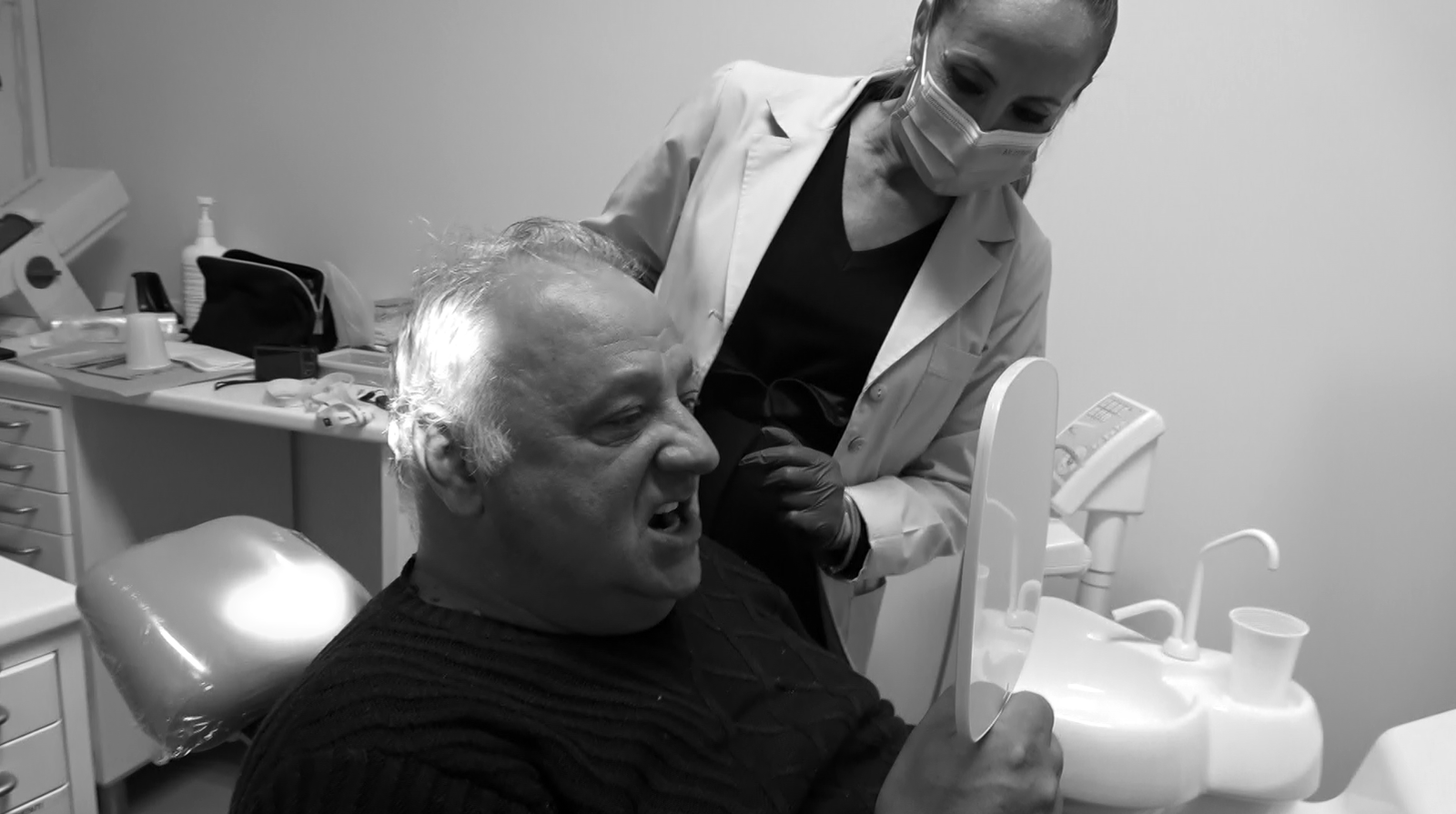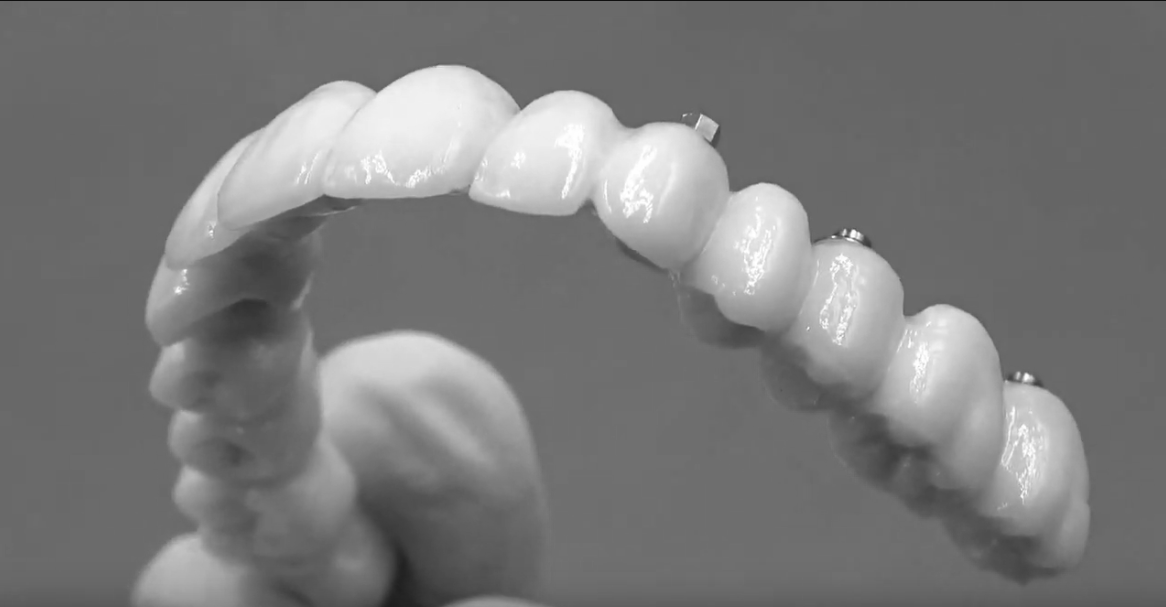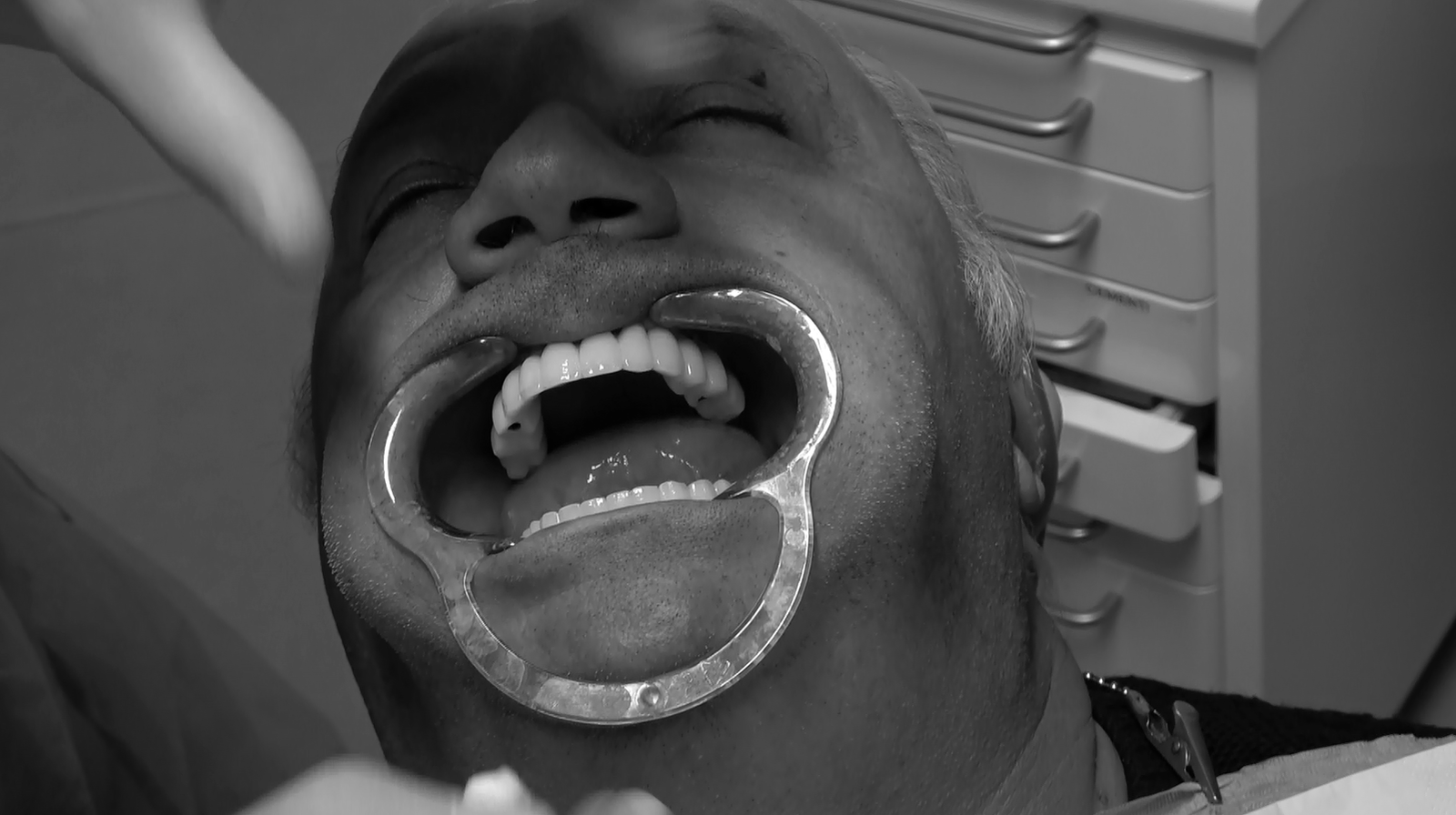Immediate Load All-on-6 Dental Implants: Transforming Smiles, Restoring Confidence
 Introduction: Explore the revolutionary All-on-6 immediate load dental implant technique, an advanced oral rehabilitation method involving the placement of six dental implants strategically to support a fixed prosthesis. Tailored for patients who have lost all teeth in one or both dental arches or require extraction of remaining teeth due to severe dental issues.
Introduction: Explore the revolutionary All-on-6 immediate load dental implant technique, an advanced oral rehabilitation method involving the placement of six dental implants strategically to support a fixed prosthesis. Tailored for patients who have lost all teeth in one or both dental arches or require extraction of remaining teeth due to severe dental issues.
Key Highlights of All-on-6 Immediate Load Implantology:
- Number of Implants: Unlike the traditional approach, which might require an implant for each missing tooth, All-on-6 utilizes six dental implants to support an entire arch of teeth.
- Immediate Load: Following implant placement, a temporary prosthesis is immediately secured on the entire dental arch. This allows patients to have a functional mouth from day one, minimizing the period without teeth.
- Strategic Implant Placement: Implants are strategically positioned to maximize available bone density, often avoiding the need for bone grafts. This technique provides sufficient stability to support a fixed prosthesis.
- Fixed Prosthesis: After the healing period, a custom-made permanent fixed dental prosthesis is crafted to fit onto the implants. This prosthesis offers a stable and aesthetic solution for the patient.
- Advantages: Immediate Load All-on-6 implantology presents various advantages, including rapid rehabilitation, enhanced stability compared to removable dentures, reduced healing times, and often the avoidance of more invasive procedures like bone grafts.
This procedure requires meticulous planning and collaboration among the oral surgeon, implantologist, and prosthetic technician to ensure optimal results. It’s crucial to note that every patient is unique, and treatment options may vary based on individual conditions. If you’re intrigued by the All-on-6 immediate load implantology, consulting with an experienced dental professional is advisable for a personalized evaluation. Transform your smile and regain confidence with our expert care in All-on-6 implantology.
All-on-6 Immediate Load Implantology: Tailored Solutions for Unique Smiles
Introduction: Developed primarily for edentulous patients, those who have lost all teeth in one or both dental arches, All-on-6 immediate load implantology is a groundbreaking procedure. Specifically recommended for the following patient profiles:
Ideal Candidates for All-on-6 Immediate Load Implantology:
- Edentulous Patients: For individuals who have lost all teeth in one or both dental arches and seek a stable, permanent solution to restore chewing function and enhance smile aesthetics.
- Patients with Poorly Conditioned Teeth: Suited for patients with severely damaged, decayed, or non-functional teeth, necessitating the extraction of existing teeth to improve overall oral health.
- Those Preferring to Avoid Removable Dentures: For individuals who prefer to steer clear of removable dentures and desire a permanently fixed solution to enhance stability and comfort.
- Patients with Moderate Bone Loss: All-on-6 is designed to maximize available bone density and can be a viable option for patients with moderate bone loss, often avoiding the need for bone grafts.
- Patients Seeking a Swift Solution: Offering immediate load, allowing patients to have a temporary prosthesis from the first day of the procedure. Particularly advantageous for those seeking swift rehabilitation.
It’s crucial to emphasize that each patient is unique, and the decision to opt for All-on-6 immediate load implantology should be made after a thorough evaluation by a dental professional. Precise planning and customization to the patient’s specific needs are fundamental to the success of this procedure. Transform your smile with confidence through our personalized All-on-6 implantology solutions.
All-on-6 Fixed Dental Solution: Stability, Aesthetics, and Functionality
Introduction: All-on-6 is a revolutionary fixed dental solution that involves the use of six dental implants to support an entire arch of teeth. This innovative approach has been designed to provide a stable and permanent solution for edentulous patients or those with severe tooth loss. Here are key details about the All-on-6 fixed dental solution:
- Dental Implants: The foundation of All-on-6 is the dental implants. In this case, six implants are strategically placed in the jawbone to ensure stability and proper support.
- Immediate Load: Following implant placement, an immediate temporary dental prosthesis is secured. This temporary prosthesis, despite its temporary nature, enables the patient to chew and speak from the very first day after the procedure.
- Fixed Dental Prosthesis: After the healing period, a permanent fixed dental prosthesis is crafted. This prosthesis is typically made from durable materials such as ceramics, providing both aesthetic and functional results.
- Full Arch Coverage: All-on-6 is designed to cover the entire dental arch, replacing all missing teeth in that specific area. This ensures a complete and uniform outcome.
- Stability and Security: Thanks to the strategic arrangement of implants, All-on-6 provides remarkable stability, minimizing the chance of unwanted prosthesis movements and enhancing security during chewing and everyday use.
- Avoiding the Need for Bone Grafts: The All-on-6 approach is designed to leverage available bone density, often avoiding the need for bone grafts. This simplifies the surgical process for many patients.
In summary, All-on-6 represents a comprehensive fixed dental solution that offers stability, aesthetics, and functionality for patients seeking a permanent alternative to traditional dentures or for those who have lost all teeth in one or both dental arches.
All-on-6 Technique: Addressing Bone Challenges in the Premaxilla Region
Introduction: The All-on-6 technique was initially designed to tackle challenges related to the quality and quantity of the maxillary bone in the anterior sectors, particularly in the premaxillary region. This approach was developed to overcome the limitations of traditional implants and provide an immediate solution for edentulous patients or those with significant bone loss.
Key Reasons for Focusing on the Premaxilla Zone:
- Better Bone Density: The anterior part of the maxilla typically has better bone density than the posterior region. This allows for a more stable implant anchorage without the need for bone grafts.
- Avoiding Nerves and Sinuses: The premaxilla zone is generally safer in terms of implant placement, avoiding important nerves and paranasal sinuses that could lead to complications.
- Aesthetic Response: Since the premaxilla area is more visible when the patient smiles, concentrating on this region enables better aesthetic outcomes.
However, it’s essential to note that this does not mean that All-on-6 is exclusively limited to the premaxilla zone. In many situations, All-on-6 can be adapted and applied in the posterior area, especially when bone density permits. Additionally, there are variants of the All-on-6 technique, such as All-on-8 or All-on-10, involving a greater number of implants and can be used to cover the posterior region of the maxilla.
The decision to use the All-on-6 technique or other variants will depend on the specific anatomical conditions of the patient and individual needs. Consultation with an experienced dental professional is crucial to assess feasibility and determine the best solution for the patient’s specific case.
Crucial Considerations for All-on-6 Success: Optimal Aesthetics and Functionality
- Balance in Chewing Function: Ensure the proper distribution of chewing forces across the entire dental arch, including the posterior teeth. Accurate surgical and prosthetic planning can enhance balance in chewing function.
- Aesthetics of the False Gumline: Customize the aesthetics of the prosthesis, including the false gumline, based on patient preferences. Collaboration during the trial and customization phase is essential for satisfying aesthetic outcomes.
- Aesthetic Concerns and Excessive Bulk: Address aesthetic concerns or issues related to bulk, ensuring a natural fit and appearance. The trial and correction phase are crucial for optimal results.
- High-Quality Materials: Use high-quality materials to ensure durability and strength for both the provisional and definitive prosthesis. The final composite should blend strength with aesthetics.
- Temporo-Mandibular Joint (TMJ) Evaluation: Conduct a detailed evaluation of the TMJ to ensure correct occlusion and prevent chewing problems and temporomandibular disorders.
- Technique Variation: Explore variations of the All-on-6 technique or consider alternatives like All-on-8 or All-on-10 if patients express dissatisfaction with the false gumline or other aesthetic aspects.
Open communication between the patient and the dental team, coupled with meticulous planning and detailed trial phases, is key to achieving satisfying results in terms of aesthetics and functionality. If specific concerns arise, openly discussing them with the dentist or prosthetist allows exploration of improvement possibilities.
Post-Operative Care Guidelines for All-on-6 Dental Implants
Immediately After the Procedure:
- Hemostasis: Gently bite on cotton gauze to promote blood clotting. Change the gauze as directed by the surgeon.
- Ice Application: Apply ice to the surgical area for short periods to reduce swelling and pain.
- Medication Intake: Take prescribed or recommended medications to manage pain and prevent infection.
Wound Care:
- Diet: Follow a diet of soft and cold foods in the initial stages. Avoid hot and hard foods that may irritate the area.
- Oral Hygiene: Maintain meticulous oral hygiene. Use saline solutions for gentle rinsing, avoiding the operated area.
First Weeks After the Procedure:
- Avoid Smoking and Alcohol: Refrain from smoking and alcohol in the immediate days after the procedure.
- Limit Physical Activity: Avoid intense physical exertion in the first weeks to facilitate healing.
Follow-up Visits:
- Follow Surgeon’s Instructions: Adhere to post-operative instructions provided by the surgeon. This includes when to resume normal activities, removal of stitches, and follow-up visit dates.
Report Anomalies:
- Abnormal Symptoms: Immediately contact the surgeon if abnormal symptoms such as excessive swelling, persistent bleeding, or unbearable pain occur.
Long-Term Healing:
- Regular Check-ups: Schedule regular check-ups to monitor healing and discuss any concerns or questions.
Remember, these are general guidelines, and specific instructions may vary based on individual conditions. It is crucial to follow the guidance of your medical team to ensure optimal healing and long-term success of the All-on-6 procedure.
Advantages of All-on-6 (Pros):
- Immediate Loading: The ability to attach a provisional prosthesis immediately provides functional teeth from day one.
- Minimal Invasiveness: Reduced need for bone grafts makes the procedure less invasive compared to some traditional options.
- Cost Reduction: Utilizing six implants may be less expensive compared to options requiring more implants.
- Quick Rehabilitation: Shorter healing period compared to procedures involving more implants.
- Immediate Aesthetics: Immediate placement of provisional prosthesis for instant aesthetic improvement.
Disadvantages of All-on-6 (Cons):
- Limitations in the Posterior Area: Focus on the anterior zone may result in potentially reduced stability in the posterior area.
- Aesthetic Compromises: Possible aesthetic compromises due to the presence of a large false gumline.
- Need to Adjust Chewing Patterns: Adaptation to new chewing patterns, often biased towards the anterior zone.
- Potential Compromise of Bone Quality: Adaptation to available bone quality, with potential impact on long-term stability.
- Individual Variations: Effectiveness may vary based on individual anatomical characteristics, not suitable for all patients.
In conclusion, the decision to choose All-on-6 or other dental rehabilitation options should be based on the specific needs of the patient, anatomical considerations, and individual preferences. A detailed consultation with an experienced dental professional is essential to determine the best solution for each case.
Regarding prices, significant differences are noted between the United States and Italy.
Information on All-on-6 Prices in the United States and at Our Center in Italy, Specifically in Padua.
Prices can vary significantly based on the region, medical center, and included services. Here are some factors that might influence price differences:
- Operating Costs: Operating costs in the United States may be higher than those in Italy, contributing to the price difference. These costs may include rent, staff salaries, insurance, and local regulations.
- Materials Used: The quality of materials used for the prosthesis, implants, and other components can influence the price. High-quality materials, such as state-of-the-art ceramics, can increase costs.
- Level of Specialization: The expertise and experience of professionals involved, including oral surgeons and prosthodontists, can affect costs. A specialized center with highly qualified staff may charge higher fees.
- Additional Services: Some centers may offer additional services, such as post-operative monitoring, extra adjustment sessions, or accommodation services, which can contribute to overall costs.
- Customized Assessment: The complexity of the patient’s case and individual needs can influence costs. For example, the need for bone grafts or additional treatments may increase the overall price.
It’s important to note that competition, geographical location, and payment policies can also influence price variability among different facilities. Before making a decision, it is advisable to obtain personalized assessments from various centers and clearly discuss all services included in the price.
Comparison of All-on-6 Prices in the United States and Our Specialized Dental Center in Padua, Italy:
In the United States:
- Minimum Cost Prices: $25,000
- Maximum Cost Prices: $30,000
In Padua, Italy:
- Minimum Cost Prices: $8,000
- Maximum Cost Prices: $10,000
These prices reflect a significant difference in fees between the United States and your center in Padua. It’s important to note that various factors, such as the quality of materials, staff experience, and included additional services, may contribute to cost variations. However, based on the provided data, it appears that costs are considerably lower in Padua compared to the United States.
Before making a decision, it is always advisable to have detailed discussions with dental professionals at the respective centers, obtain personalized assessments, and fully understand which services are included in the indicated prices.



